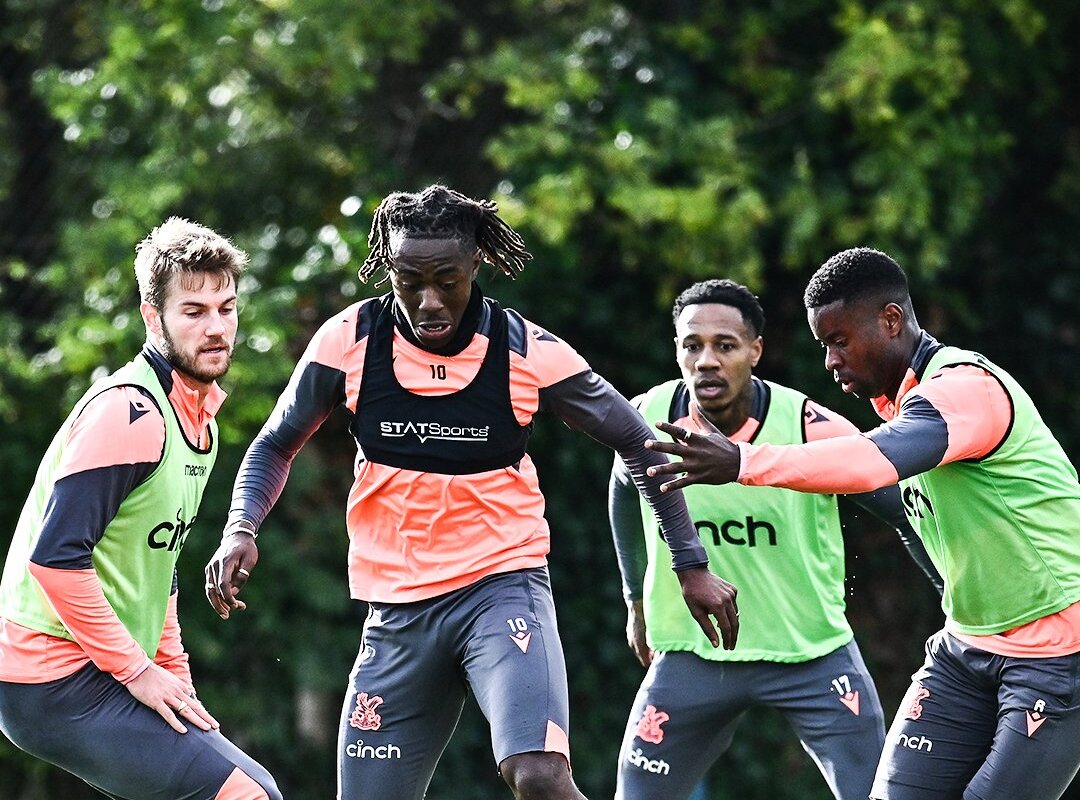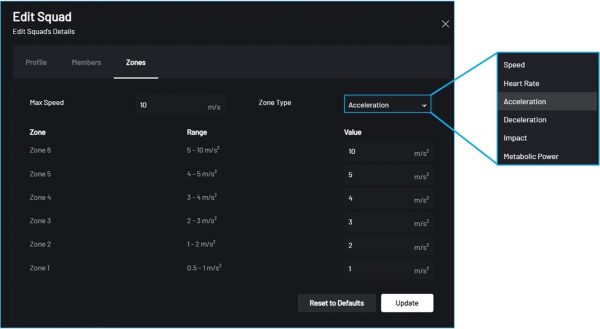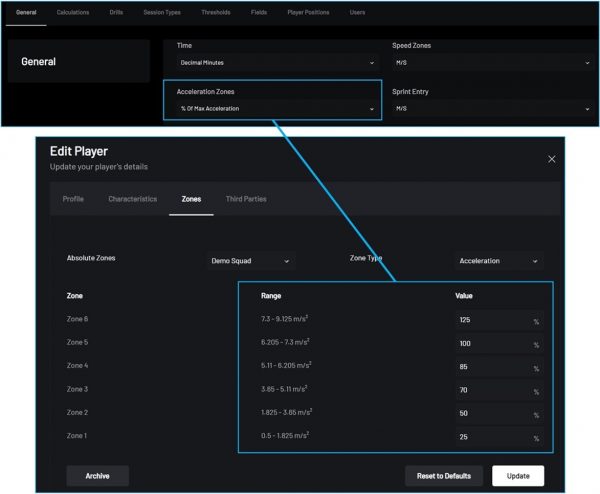
30 Apr Absolute and Relative Metric Options Added To Improve Individual Athlete Monitoring
INTRODUCTION
We are pleased to announce this significant update to our suite of metrics providing users with enhanced flexibility when quantifying athlete performance data.
In the STATSports Sonra software, many metrics are calculated using zones (eg. Zone 4 Distance, Zone 5 Accelerations or Time in Heart Rate Zone 6). For each athlete, users will now be able to create two sets of zones (absolute and relative) for the following metric categories:
- Speed (absolute and relative zones already available).
- Heart Rate
- Accelerations
- Decelerations
- Metabolic Power
- Impacts
This expansion not only enhances data granularity but also provides practitioners with more nuanced insights crucial for optimizing athlete performance and mitigating injury risk.
Absolute and Relative Metrics: Description & Implementation
- Absolute Metrics are metrics calculated using group or squad zone definitions.
- Relative Metrics are metrics calculated using individualised player zone definitions.
Within sports performance analysis, precision and individualization are paramount.
Using absolute zones ensures all players in a group or squad have their zone measurements calculated using identical, fixed values, offering a standardised range of values for assessing performance across the board.
For instance, in acceleration and deceleration metrics, absolute zones delineate specific thresholds, enabling coaches and sports scientists to gauge athletes’ explosive power objectively.
Moreover, in metrics like impacts, absolute zones quantify the intensity of high intensity actions, aiding in injury prevention strategies and player welfare initiatives.
However, using absolute zones doesn’t consider each player’s individual ‘capacity’.
On the other hand, relative zones personalize the analysis, tailoring performance metrics to each athlete’s unique physiological profile.
By anchoring metrics to individual markers such as maximum speed or aerobic capacity, relative zones offer a deeper understanding of an athlete’s capabilities and limitations.
For example, in heart rate monitoring, relative zones account for an athlete’s maximal heart rate, allowing for precise tracking of cardiovascular strain during training sessions and competitions.
Configuring Absolute & Relative Zones in Sonra
STATSports’ Sonra software now allows users to calculate and analyse both absolute and relative defined metric zones.
Instead of quantifying ‘Accelerations’, a user can now report one or both of ‘Accelerations (Absolute)’ and ‘Accelerations (Relative)’.
Absolute Zones are configured from the squad or group profile, with 6 metric groups available for usage, as shown below:

Figure 1: Absolute Zone Metric Categories & Configuration
Relative Zones are configured from the individual player profile. Speed, Acceleration and Deceleration Zones can be set to be configured in the Sonra settings page to use either fixed speed or acceleration values or to a percentage of an individual player’s max speed/acceleration, as shown below:

Figure 2: Relative Zone Metric Categories & Configuration – Using Player % Max Acceleration
Functionality Updates
Given there are now two variations of metrics within these categories instead of one, users must choose whether the wish for absolute or relative metrics to be used for the following functions within the STATSports Sonra software:
- Max Intensity Period and Sub Max Intensity Period
- High Intensity Bursts
- Events Export (CSV and XML)
- Live Thresholds
- Activity Graph Display
This can be set in Settings > Calculations > Metric Event Zone.

Figure 3: Metric Event Zone Category Selection
The integration of absolute and relative zones across multiple performance metrics yields a plethora of benefits for athletes, coaches, and sports science practitioners including:
- Targeted training interventions tailored to individual needs, optimizing performance gains while minimizing injury risk.
- Enabling proactive injury prevention strategies by flagging outliers and deviations from expected norms, allowing for timely interventions and workload adjustments.
- Fostering data-driven decision-making, empowering coaches to make informed choices regarding player selection, tactical adjustments, and recovery strategies based on comprehensive performance insights.
Embracing this latest enhancement to the STATSports Sonra system unlocks a new dimension of precision coaching and athlete development, where data-driven strategies can help drive athletic excellence even further.